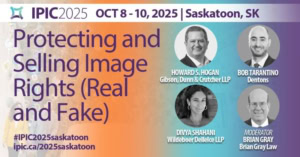Fall Tax Briefing: Trust Tax Structures, Mutual Fund Trust Eligibility, Director Liability and More
As we trade patios for boardrooms, we have prepared a roundup of select tax law updates from the summer. Here is what you need to know heading into the fall:
1. Timing Matters: Federal Court of Appeal Clarifies Part IV Tax in Trust-Sandwich Structures
Many Canadian private companies use a classic “trust sandwich” structure in which some or all common shares of an operating company (“Opco”) are held by a family trust whose beneficiaries include corporations. Dividends paid by the Opco to the family trust can then be allocated by the family trust to a corporate beneficiary, with a designation made under subsection 104(19) of the Income Tax Act (Canada) (the “Tax Act”), allowing the dividend to retain its character in the hands of the corporate beneficiary. This allows the corporate beneficiary to claim the inter-corporate dividend deduction and enables funds to move out of the Opco without immediate Part I tax. However, dividends paid to a corporate beneficiary may attract Part IV tax, which is a refundable tax on dividends received by private corporations from passive investments. Generally, Part IV tax is applicable unless the payer corporation (i.e., the Opco) is “connected” to the recipient (that is, the recipient corporation has voting control of the payer corporation or owns more than 10% of both its voting rights and value).
The recent Federal Court of Appeal (“FCA”) decision in Vefghi Holding Corporation and S.O.N.S. Environmental Ltd. (“Vefghi”) addressed the timing of the “connected” test for purposes of Part IV tax where dividends are paid to a family trust and then designated under subsection 104(19) to a corporate beneficiary. The key question was whether the “connected” test is determined at the moment that the family trust receives the dividend from the Opco, or at the later deemed moment when subsection 104(19) attributes the dividend to the corporate beneficiary in the taxation year that includes the family trust’s year-end (i.e., December 31).
The FCA confirmed that the relevant time to determine the “connected” test is the end of the family trust’s taxation year in which the dividend is received. As a result, if the payer corporation and the corporate beneficiary are not connected as of the family trust’s year-end, the dividend designated to the corporate beneficiary will attract Part IV tax, even if they were connected earlier in the year.
This decision underscores the importance of carefully monitoring corporate structures using family trusts around M&A and other corporate events. A pre-sale dividend routed through a family trust may create unintended Part IV tax if the beneficiary corporation and Opco are no longer connected at the family trust’s year-end. We encourage clients to undertake advance planning of dividend timing, trust year-ends and corporate reorganizations to avoid unnecessary tax costs.
2. Mutual Fund Trust Eligibility Under the Microscope: Lessons from Grenon
In the case of The RRSP of James T. Grenon (552-53721) v His Majesty the King (“Grenon”), the FCA considered whether certain trusts established by Mr. Grenon qualified as mutual fund trusts (“MFTs”) for purposes of the Tax Act. Generally, one of the benefits of qualifying as an MFT is that units of the trust would be considered qualified investments for RRSPs and other registered plans. The Tax Act requires certain conditions to be met for a trust to qualify as an MFT, which include the following:
(i) the trust must satisfy one of the following (the “Dispersal Requirement”): (a) there has been at or before the determination time a lawful distribution to the public of units of the trust and a prospectus, registration statement or similar document was not, under the laws of the province or territory, required to be filed in respect of the distribution; or (b) a class of the units of the trust is, at that time, qualified for distribution to the public, meaning that a prospectus, registration statement or similar document has been filed with, and, where required by law, accepted for fling by, a public authority in Canada pursuant to and in accordance with the laws of Canada or of any province or territory and there has been a lawful distribution to the public of units of that class in accordance with that document; and
(ii) in respect of a class of the trust’s units that meets the Dispersal Requirement, there are at that time, at least 150 beneficiaries of the trust, each of whom holds a block of units of that class having an aggregate fair market value of at least $500 (the “Beneficiary Requirement”).
The Tax Court of Canada (“TCC”) had concluded that the trusts failed to meet the Dispersal Requirement and Beneficiary Requirement on the basis that the two requirements were to be read as a single combined test, requiring that at least 150 unitholders had to acquire units under a lawful distribution to the public.
The FCA rejected the TCC’s interpretation of the two requirements but upheld its conclusion that the trusts did not qualify as MFTs. The FCA found that trusts did not qualify as MFTs on the basis that the distributions under the offering memoranda were not lawful distributions because the offering memoranda (“OMs”) had specified a minimum of 160 investors, but once non-eligible investors were excluded, that minimum was not met, resulting in a breach of a key term of the OMs.
The FCA’s analysis reinforces that “lawful” distribution must be measured against applicable provincial and territorial securities laws and the specific terms of the exemption relied on. If an OM sets a minimum subscription threshold, it must be met, or the offering will not be lawful. This serves as an important reminder for fund managers and promoters to draft carefully, and strictly adhere to essential terms in OMs. The FCA’s clarification that the Dispersal Requirement and Beneficiary Requirement are distinct is welcome news for the fund industry, but the case underscores the importance of compliance with all terms of an OM.
On the assessment side, the FCA confirmed that the Canada Revenue Agency’s (“CRA”) tax assessments under Part I of the Tax Act against Mr. Grenon’s RRSP were valid and not out of time. The taxpayer had argued that the limitation period had expired because a T3GR (Group Income Tax and Information Return for RRSPs, RRIFs and RESPs) had been filed by the trustee. The FCA rejected this position, noting that filing a T3GR does not start the normal reassessment clock for Part I tax. Instead, T3GR filings only apply for purposes of Parts XI and XI.1 of the Tax Act (the latter of which was repealed in 2011), which deal with special taxes on registered plans. This means that where no prescribed return has been filed for Part I, assessments remain open indefinitely.
The fact that a T3GR does not start the statute-barred clock for Part I tax assessments means that there may be a risk of open-ended exposure unless a prescribed Part I return is filed. Trustees may now consider whether filing nil T3 returns is advisable to trigger limitation periods. The case also highlights the need for careful monitoring of registered plan investments. Holding non-qualified investments can create unexpected tax exposure either at the plan level or in the hands of the annuitant, depending on which set of rules applies.
3. Text Messages Don’t Count: Director Liability Confirmed in Astle
Directors of a corporation can be held personally liable when the corporation fails to remit source deductions such as income tax, CPP and EI premiums. The liability is joint and several with the corporation, and it applies to amounts the corporation was required to withhold and remit on behalf of employees. While directors may raise the “due diligence” defence, courts interpret this narrowly in that directors must show that they exercised the care, diligence and skill of a reasonably prudent person to prevent the failure to remit source deductions, not simply that they acted once the problem came to light. Resignation does not provide a quick escape either, as liability extends for up to two years after a director ceases to hold office, and corporate law formalities must be properly followed to make a resignation effective.
In the informal procedure case of Astle v. The King (“Astle”), the TCC considered director liability for a corporation’s failure to remit payroll withholdings. The director argued that he had resigned by sending a text message to his business partner and that the assessments were therefore out of time. The TCC rejected this argument, holding that corporate law formalities govern director resignations, not informal communications.
The director also raised the due diligence defence, but the TCC found he did not meet the objective standard. He relied on other directors and staff but failed to take reasonable steps to ensure remittances were made or to actively prevent failures. The TCC emphasized that simply reacting after the fact is not enough as directors must turn their minds to compliance on an ongoing basis.
This case provides a useful reminder that directors can be personally liable for unremitted source deductions, and courts apply the due diligence defence strictly. Reliance on others will not suffice unless the director actively monitors compliance. Formal resignations must be properly documented under corporate law and casual texts or emails are not effective.
4. Mandatory Disclosure Rules (“MDR”) and Employment Settlement Agreements
The MDR rules were first introduced in 2010, requiring taxpayers and advisors to report certain “reportable transactions” that bear specific hallmarks of tax avoidance. The rules were designed to give the CRA early insight into aggressive tax planning arrangements, so that it could respond more quickly with audits or legislative changes.
In the 2021 Federal Budget, the Federal Government announced a major expansion of the MDR rules, bringing Canada more in line with international standards. Draft legislation was released in 2022 and again in 2023, and the expanded rules became law on June 22, 2023. The new framework significantly broadened the scope of disclosure, shortened reporting deadlines and introduced stiff penalties for non-compliance. In particular, the reportable transaction regime requires taxpayers, advisors and promoters to disclose avoidance transactions that exhibit any of three hallmarks: contingent fees, confidential protection or contractual protection.
There was concern that the reportable transactions regime could capture standard employment termination settlements, where the parties allocate a portion of the settlement to non-taxable damages and the employee indemnifies the employer if the CRA disagrees with that characterization on the basis that the arrangement engaged the contractual protection hallmark.
In the summer, the CRA released a technical interpretation, consistent with its published MDR position, confirming that this kind of indemnity should not generally constitute “contractual protection” because it protects the employer, not the employee who is receiving the benefit of the settlement. Moreover, the CRA stated that since most employment settlements are aimed at resolving disputes rather than obtaining tax benefits, they are unlikely to be considered avoidance transactions. That said, the CRA cautioned that settlements engineered to mischaracterize large sums as non-taxable damages without legal or factual basis could still attract scrutiny.
5. August 2025 Legislative Proposals
On August 15, 2025, the Federal Government released a large package of draft tax legislation (the “August 2025 proposals”). The package updates earlier draft rules announced in the 2024 Federal Budget (“Budget 2024”) and the 2024 Fall Economic Statement, but it also introduces several new measures. Below is a summary of notable changes.
i. CRA Information Requests and Penalties
The CRA has broad powers to request information and documents during an audit and can seek a Federal Court compliance order if it believes that a taxpayer is not cooperating. Budget 2024 proposed legislative changes that significantly expand these rules, including: (i) a new penalty (now “up to” 10%) of the aggregate tax payable for each year covered by a court-issued compliance order (subject to certain limits), and (ii) a Notice of Non-Compliance (“NoNC”) regime allowing CRA auditors to issue a notice during an audit with a $50/day penalty, capped at $25,000.
The August 2025 proposals seek to refine these measures by proposing to make the compliance-order penalty (“up to” 10%) discretionary and allowing the Minister of National Revenue to reduce or waive the penalty where it is disproportionate or unfair. In addition, NoNCs are deemed vacated if CRA’s internal review takes more than180 days, and both regimes include an explicit carve-out where there was a reasonable belief that solicitor-client privilege applied. The proposal to compel interviews and written statements under oath or affirmation remains unchanged in the August 2025 proposals.
While the August 2025 proposals soften some of the harsher elements from Budget 2024, the proposed CRA audit powers remain stringent. Clients should be proactive and engage tax advisors early in the audit process to manage risk and protect privilege.
ii. Anti-Deferral Rules for CCPCs with Foreign Affiliates
In the 2022 Federal Budget, the Federal Government targeted Canadian-controlled private corporations (“CCPCs”) and their shareholders that earn passive investment income through “controlled foreign affiliates”.
Earlier drafts were seen as too broad. The new proposals expand the carve-out for foreign active business income (“FABI”), which provide some relief from these punitive rules with respect to income from substantive businesses abroad. The rules apply retroactively to tax years beginning on or after April 7, 2022, with some exceptions.
CCPCs with bona fide business operations abroad get welcome relief, but careful elections and documentation will be required to benefit.
iii. Crypto-Asset Reporting Framework (“CARF”)
As previously announced in Budget 2024, Canada will now adopt the OECD’s global framework for crypto asset reporting. The August 2025 proposals implement the OECD’s CARF which, beginning in 2026, will require persons resident in Canada or carrying on business in Canada that effectuate exchange transactions involving crypto assets (such as crypto exchanges, brokers, dealers, and even ATM operators, etc.) to collect detailed client information and report annual transaction data to the CRA.
These measures are proposed to take effect beginning in 2026 with the first reporting to be made in 2027.
iv. Updates to the Scientific Research and Experimental Development (“SR&ED”) Program
The 2024 Fall Economic Statement proposed various amendments to enhance the SR&ED tax incentive program applicable to taxation years beginning on or after December 16, 2024. The August 2025 proposals include draft legislation to give effect to this announcement by proposing to:
(i) increase the maximum qualifying expenditures that can be claimed as an investment tax credit (“ITC”) for the year from $3 million to $4.5 million;
(ii) make the 35% ITC that is currently only available to CCPCs accessible to eligible Canadian public corporations (“ECPC”) (i.e., resident in Canada, not controlled, directly or indirectly, by non-residents, and with a class of shares listed on a designated stock exchange, or elected/designated by the Minister of National Revenue as public), with Canadian-resident subsidiaries all or substantially all owned by ECPCs also eligible for refundability;
(iii) widening the taxable-capital phase-out range for CCPCs from $10–$50 million to $15–$75 million;
(iv) introducing a gross-revenue phase-out for ECPCs under which access to the $4.5 million enhanced-rate limit is reduced on a straight-line basis as the corporation’s (or consolidated group’s) average gross revenue over the prior three fiscal years increases from $15 million to $75 million, and allowing CCPCs to elect into this same gross-revenue phase-out instead of the taxable-capital test if more favourable; and
(v) re-admitting capital expenditures to the SR&ED base for property acquired after December 15, 2024 (and leases first payable after that date), with 35% ITCs on current SR&ED costs fully refundable and ITCs on capital costs only partially refundable (40%), while expenditures over the limit continue to earn the 15% ITC (with 40% refundability on capital in specified cases).
If you have any questions with respect to the matters discussed above, please contact Mariam Al-Shikarchy at [email protected] or any other member of our Tax practice group. The author gratefully acknowledges the assistance of Leanne Stevens in the preparation of this update.
This update is intended as a summary only and should not be regarded or relied upon as advice to any specific client or regarding any specific situation.
If you would like further information regarding the issues discussed in this update or if you wish to discuss any aspect of this commentary, please feel free to contact us.
Latest News








